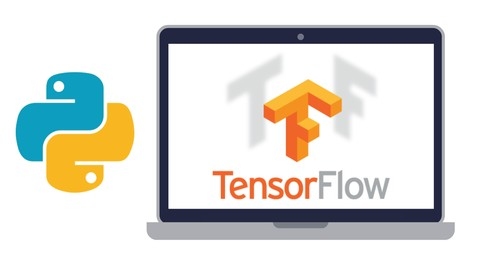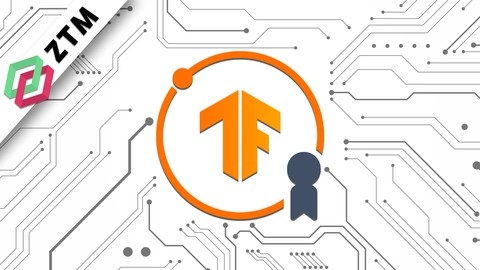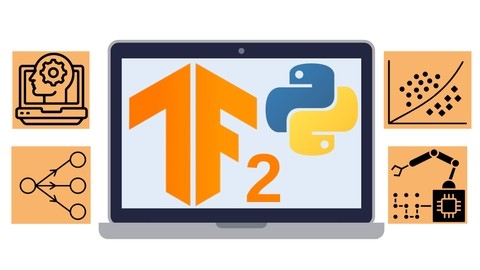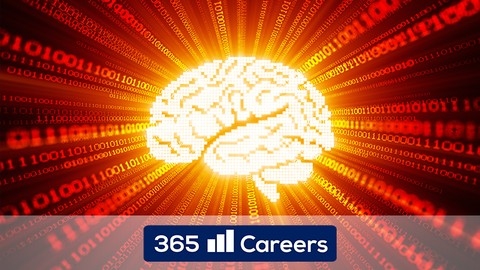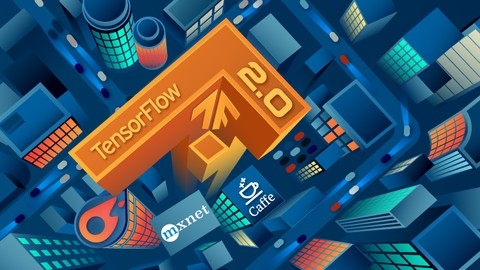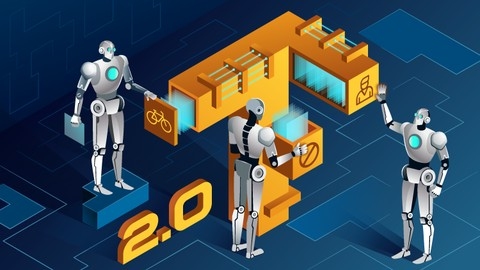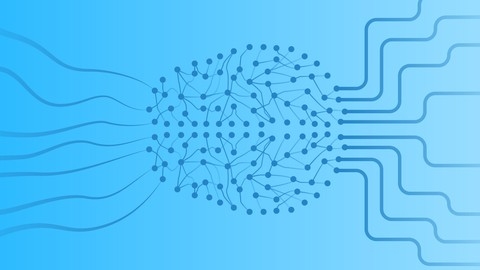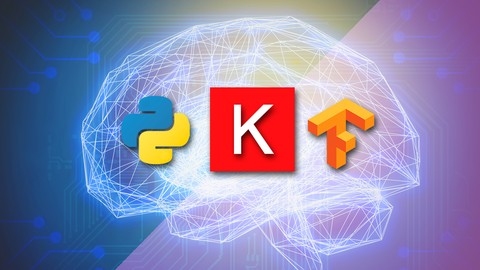Learning TensorFlow can be a daunting task, especially with so many courses available online.
You want a comprehensive course that’s engaging, well-structured, and taught by experts.
You also want to ensure that the course caters to your learning style and goals.
We’ve researched and evaluated numerous TensorFlow courses on Udemy, and we’ve identified our top picks.
For the best TensorFlow course overall, we recommend Complete Guide to TensorFlow for Deep Learning with Python.
This course is highly rated for its comprehensive coverage, engaging teaching style, and practical projects.
It starts with the basics of machine learning, then dives into TensorFlow and Keras, covering various deep learning architectures, including convolutional neural networks (CNNs), recurrent neural networks (RNNs), and generative adversarial networks (GANs).
If this course doesn’t meet your specific needs, we have several other excellent options.
Keep reading for more recommendations based on your level of experience, preferred learning style, and desired focus areas.
Complete Guide to TensorFlow for Deep Learning with Python
The course starts by introducing machine learning, artificial neural networks, and deep learning fundamentals.
You’ll get a crash course on essential Python libraries like NumPy, Pandas, and scikit-learn for data preprocessing and visualization.
The course then teaches you to create neural networks manually in Python and TensorFlow, helping you understand how they work.
You’ll learn about perceptrons, activation functions, cost functions, gradient descent backpropagation, and more.
From there, you’ll explore TensorFlow’s core features like syntax, graphs, variables, and placeholders.
The instructor provides hands-on examples for building neural networks with TensorFlow for regression and classification tasks.
Next, you’ll learn advanced neural network architectures like Convolutional Neural Networks (CNNs) for image data like MNIST, and Recurrent Neural Networks (RNNs) for sequences like text and time series.
Essential RNN components like LSTMs and GRUs are covered to handle vanishing gradients.
The course also covers unsupervised learning with autoencoders for dimensionality reduction, as well as cutting-edge Generative Adversarial Networks (GANs) for generating data.
You’ll leverage TensorFlow’s higher-level APIs like Estimator and Keras for efficiency, and use TensorBoard for visualization.
Additionally, you’ll apply reinforcement learning concepts to OpenAI Gym environments, training agents through trial-and-error.
Practical exercises and projects solidify your learning, with detailed solutions provided.
Tensorflow 2.0: Deep Learning and Artificial Intelligence
You’ll gain practical coding experience from the outset, working with real datasets and leveraging free GPU/TPU resources on Google Colab to train advanced models effortlessly.
The course begins by explaining core machine learning concepts like neurons and how models learn.
You’ll then build feedforward artificial neural networks (ANNs) for image classification and regression tasks.
Mastering convolutional neural networks (CNNs), you’ll apply them to image data like CIFAR-10 and Fashion MNIST, incorporating techniques like data augmentation and batch normalization.
For sequence data like time series, you’ll explore recurrent neural networks (RNNs) including LSTMs and GRUs, covering applications in forecasting, text classification, and using RNNs for image tasks.
Natural language processing (NLP) is comprehensively covered, delving into embeddings, text preprocessing, and utilizing CNNs/RNNs for NLP tasks.
Other key topics include recommender systems, transfer learning for computer vision, generative adversarial networks (GANs), and deep reinforcement learning theory/applications like a stock trading agent.
You’ll learn low-level TensorFlow usage, building custom models, loss functions, optimization methods like Adam, and distributed training strategies.
Deploying models as web services using TensorFlow Serving and TensorFlow Lite for mobile apps is also covered.
Throughout, you’ll find helpful tips on setting up environments, using Python/Jupyter, effective learning strategies, and preparing for the TensorFlow Developer Certificate exam.
TensorFlow Developer Certificate Bootcamp
The course starts by introducing you to the fundamentals of deep learning, neural networks, and TensorFlow.
You’ll learn how to create and manipulate tensors, which are the building blocks of TensorFlow models.
This section covers essential concepts like tensor operations, matrix multiplication, and data types.
Next, you’ll dive into building neural network models for regression and classification problems using TensorFlow.
You’ll learn how to preprocess data, create model architectures, train models, and evaluate their performance using metrics like mean squared error and confusion matrices.
The course covers techniques like feature scaling, data augmentation, and non-linearity to improve model performance.
The course then moves on to computer vision and convolutional neural networks (CNNs).
You’ll learn how to build and train CNNs for image classification tasks, including techniques like transfer learning and fine-tuning pre-trained models.
You’ll also learn how to make predictions on custom images using your trained models.
Natural language processing (NLP) is another major topic covered in the course.
You’ll learn how to preprocess text data, convert it into numerical representations, and build models like recurrent neural networks (RNNs) and 1D CNNs for tasks like sentiment analysis and text classification.
The course also covers time series forecasting with TensorFlow, which is essential for predicting future values based on historical data.
You’ll learn how to prepare time series data, build models like LSTMs and N-BEATS, and evaluate their performance using metrics like MASE.
Throughout the course, you’ll work on several milestone projects that allow you to apply what you’ve learned to real-world problems.
These projects include building a food vision model, an NLP model for medical abstracts, and a Bitcoin price forecasting model.
As you progress through the course, you’ll also learn about advanced topics like transfer learning, feature engineering, and ensemble models.
The course also includes a section dedicated to preparing you for the TensorFlow Developer Certification exam.
Complete Tensorflow 2 and Keras Deep Learning Bootcamp
This comprehensive course covers everything you need to know, from the fundamentals to advanced topics like Generative Adversarial Networks (GANs).
You’ll start with crash courses on NumPy, Pandas, and data visualization using Matplotlib, ensuring you have a solid foundation.
The course then dives into machine learning concepts, including supervised and unsupervised learning, overfitting, and performance evaluation metrics.
Next, you’ll learn how to build basic Artificial Neural Networks (ANNs) for classification and regression tasks.
The course covers key concepts like perceptrons, activation functions, cost functions, gradient descent, and backpropagation.
You’ll also explore the differences between TensorFlow and Keras syntax.
The course dedicates significant time to Convolutional Neural Networks (CNNs) for image data.
You’ll work with popular datasets like MNIST and CIFAR-10, learning about image filters, kernels, convolutional layers, and pooling layers.
Additionally, you’ll tackle real-world image files, from data preprocessing to model evaluation.
Recurrent Neural Networks (RNNs) are covered in-depth, including handling sequence data, vanishing gradients, LSTMs, and GRUs.
You’ll apply RNNs to tasks like forecasting sine waves and time series analysis.
Natural Language Processing (NLP) is another major topic, where you’ll learn text processing, batch creation, and generating text using neural networks.
The course also explores autoencoders for dimensionality reduction and image noise removal, as well as GANs for generating images.
Finally, you’ll learn how to deploy your models as APIs or websites using Flask, enabling you to share your work with others.
Throughout the course, you’ll work on hands-on exercises and projects, ensuring you gain practical experience with the concepts covered.
The instructor provides detailed solutions, so you can compare your work and reinforce your understanding.
Deep Learning with TensorFlow 2.0
You’ll start by understanding machine learning’s significance and applications like natural language processing.
The course methodically guides you through neural network fundamentals - data, models, objective functions, and optimization algorithms.
Setting up the environment is straightforward with instructions on Python, Anaconda, Jupyter Notebook, and installing TensorFlow 2.0.
Your first machine learning algorithm introduces the TensorFlow framework’s components like inputs, outputs, weights, biases, optimizers, and loss functions.
As you delve deeper, you’ll explore neural network layers, activation functions (softmax), backpropagation’s intuition and mathematics.
Crucial topics like overfitting, underfitting, preprocessing (standardization, one-hot encoding), and initialization methods (Xavier) are covered comprehensively.
The course equips you with advanced optimization techniques - stochastic gradient descent, momentum, adaptive learning rates (AdaGrad, RMSprop, Adam).
Applying your skills, you’ll work on the MNIST dataset, preprocessing data, building models, training, and testing.
A real-world business case challenges you to explore datasets, identify predictors, preprocess, balance datasets, implement early stopping, and interpret results.
An appendix on linear algebra fundamentals solidifies your deep learning foundation.
A Complete Guide on TensorFlow 2.0 using Keras API
This comprehensive course offers a complete guide, covering everything from the basics to advanced topics like transfer learning, reinforcement learning, and distributed training.
The journey begins with an introduction to TensorFlow 2.0, its structure, and the advantages it offers over previous versions.
You’ll then dive into the fundamentals, exploring constants, variables, tensors, and operations.
This lays the foundation for building artificial neural networks, which you’ll learn to preprocess data for, construct, train, and evaluate.
Next, you’ll tackle convolutional neural networks (CNNs) and recurrent neural networks (RNNs), two widely-used architectures for image and sequence data, respectively.
Quizzes and homework assignments will reinforce your understanding along the way.
The course then shifts gears to transfer learning, where you’ll learn to leverage pre-trained models like MobileNet V2 for image classification tasks.
You’ll also explore fine-tuning techniques to improve model performance.
Reinforcement learning is up next, starting with the theoretical underpinnings like the Bellman equation and Markov decision processes.
You’ll then apply these concepts to build an AI trader for the stock market using deep Q-learning.
Data validation and preprocessing are crucial steps in any machine learning pipeline.
You’ll learn to use TensorFlow Data Validation (TFDV) for anomaly detection and TensorFlow Transform (TFT) for preprocessing tasks.
Building on these skills, you’ll create a fashion image classification API using Flask and TensorFlow Serving.
You’ll also learn to optimize models for mobile devices using TensorFlow Lite.
Distributed training techniques will show you how to accelerate model training by leveraging multiple machines.
The course wraps up with theoretical annexes on artificial neural networks, CNNs, and RNNs for a deeper understanding.
TensorFlow 2.0 Practical
You’ll start with an introduction to AI, machine learning (ML), and deep learning (DL) concepts.
The course then dives into the new features of TensorFlow 2.0, such as eager execution and the Keras API.
You’ll also learn how to use Google Colab, a powerful cloud-based platform for running TensorFlow code.
The course is structured around several hands-on projects, allowing you to apply what you’ve learned to real-world problems.
First, you’ll build a simple perceptron (single neuron model) to convert Celsius to Fahrenheit.
This project introduces you to artificial neural networks (ANNs) and how they learn.
Next, you’ll create multi-layer ANNs for regression tasks, such as predicting house prices.
You’ll explore activation functions like RELU, gradient descent, backpropagation, and the bias-variance tradeoff.
Performance metrics and data visualization techniques are also covered.
For classification tasks, you’ll build models to analyze sentiment from text data.
This involves tokenization, count vectorization, and understanding confusion matrices.
Additionally, you’ll work on image classification projects using convolutional neural networks (CNNs).
You’ll learn about feature detectors, pooling, downsampling, and architectures like LeNet.
As you progress, the projects become more challenging, allowing you to solidify your understanding of TensorFlow 2.0.
The course also covers model deployment using TensorFlow Serving, TensorBoard for visualization, and distributed strategies.
Throughout the course, you’ll have access to coding exercises and solutions in Google Colab, making it easy to follow along and practice.
By the end, you’ll have the skills to build and deploy various deep learning models using TensorFlow 2.0, opening up opportunities in fields like computer vision, natural language processing, and more.
Machine Learning in JavaScript with TensorFlow.js
The course starts by introducing you to TensorFlow.js, an open-source library that brings Google’s machine learning capabilities to the JavaScript ecosystem.
You’ll learn the core concepts behind machine learning and neural networks through interactive visualizations.
The course then dives into installing and running TensorFlow.js in different environments like the browser, Node.js, and even React Native apps.
You’ll optimize performance using WebGL and understand memory management.
The fundamentals of tensors and tensor operations are covered in-depth.
Data preparation is crucial for machine learning models.
This course walks you through loading data from CSV files, visualizing it, splitting into training/testing sets, and preprocessing techniques like normalization.
You’ll build your first model for linear regression using the user-friendly Layers API.
Once the model is defined, you’ll learn how to train it on your data using model.fit() and visualize training progress.
Model evaluation metrics like loss are explained clearly.
You’ll integrate your trained TensorFlow.js model into web UIs and save/load models for later use.
The course progresses to binary and multi-class classification problems, covering data visualization, one-hot encoding, and prediction visualization via heatmaps.
You’ll build and train classification models step-by-step.
Throughout, you’ll apply concepts through hands-on labs, quizzes, and an optional advanced lab on training without the Layers API.
The course wraps up with a review, next steps, and resources to continue your TensorFlow.js journey.
Tensorflow and Keras For Neural Networks and Deep Learning
This course covers the fundamentals of using TensorFlow and Keras for neural networks and deep learning.
You’ll start by setting up your Python data science environment and installing the necessary software like TensorFlow and Keras.
The course then dives into key Python packages for data science like NumPy for numerical computing and Pandas for data manipulation.
You’ll learn how to read data from CSV and Excel files, perform basic cleaning, and use NumPy for statistical operations.
Next, you’ll get an introduction to TensorFlow, covering computational graphs, mathematical operators, sessions, constants, variables, and placeholders.
The course also introduces Keras, a high-level neural networks API running on top of TensorFlow.
You’ll then apply TensorFlow and Keras to some preliminary applications like linear regression from first principles, multiple regression with TensorFlow Estimators, generalized linear models, and binary/multi-class classification problems.
The core concepts of machine learning, artificial neural networks (ANNs), and deep neural networks (DNNs) are explained.
You’ll implement unsupervised learning techniques like autoencoders using TensorFlow and Keras, with examples for binary and multi-class problems.
For supervised learning, you’ll build multi-layer perceptron (MLP) models with TensorFlow and Keras for classification and regression tasks.
The course covers deep learning architectures like deep neural network classifiers and regressors using TensorFlow and Keras, including wide & deep learning models.
Computer vision is covered through convolution neural networks (CNNs) for image analysis using TensorFlow and Keras.
You’ll learn about CNN architectures, activation functions, and workflows for image classification tasks.
The course also explores autoencoders with CNNs and recurrent neural networks (RNNs) like LSTMs for time series data like stock price prediction.
Finally, you’ll learn about helpful tools like Google Colab for Jupyter notebooks and version control with Github.
Practical Deep Learning with Tensorflow 2.x and Keras
The course starts with an introduction to machine learning concepts like making predictions, regression, and classification.
This lays the theoretical foundation before diving into the practical aspects.
The course then guides you through setting up the required environment for Windows, Mac, and Linux.
Once that’s done, you’ll get hands-on experience with Keras, a high-level neural networks API that works seamlessly with Tensorflow.
You’ll learn data preparation, training/testing models, visualizing the learning process using TensorBoard, and even accessing free GPU/TPU resources on Google Colaboratory to speed up training.
But the real meat is in the case studies and application-focused modules.
There’s an entire chapter dedicated to a real-world case study on predicting protein functions, walking you through data preprocessing, model architecture selection (Sequential or Functional API), and handling data shapes.
The course covers convolutional neural networks (CNNs) in depth, including pooling and dropout techniques.
You’ll implement CNNs using the Functional API and advanced architectures like Inception and ResNet with residual connections.
After learning to save/load model weights, you’ll dive into transfer learning - a powerful technique to leverage pre-trained models.
Also check our posts on:
